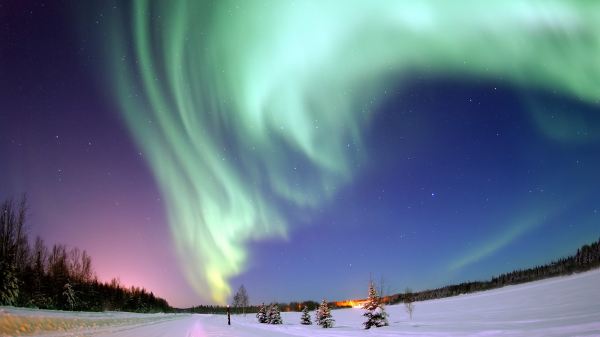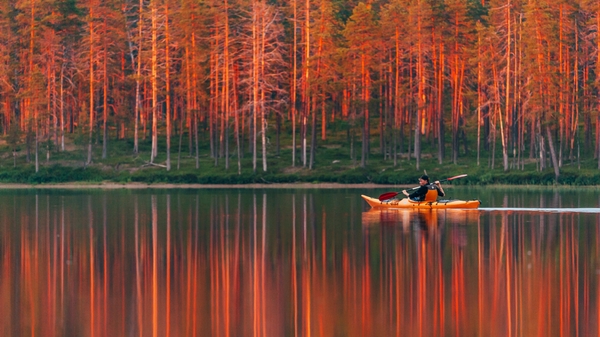Imagine living in complete darkness for two-and-a-half months each year without ever once catching a glimpse of sunlight. This is the reality of the 2,500-odd souls inhabiting Norway’s Svalbard – or to be more precise, Spitsbergen, the largest and sole permanently populated island of the nine in the archipelago. Located roughly 1,050km from the North Pole, its Arctic location means that during the summer it bathes in the ‘midnight sun’, a geographical phenomenon in which the sun hovers above the horizon continuously for more than 75 days. Conversely, in the depths of winter, ‘polar night’ occurs, where darkness descends on the region for a similar period of time.
Why, then, do so many people head to this remote, frozen area? The answer lies in its veritable treasure trove of outdoor experiences. Embodying a year-long snowy wonderland aesthetic, Svalbard boasts some of the most incredible scenery, amazing wildlife, majestic mountains, immense glaciers and beautiful fjords in the world. And, of course, it is one of the best places to take in the dazzling spectacle of the Aurora Borealis, otherwise known as the Northern Lights.
Interestingly, despite being under Norwegian sovereignty, the archipelago is governed by the Svalbard Treaty of 1920 and is treated as a separate entity. This means that Norwegians need to travel here with an ID card, and for anyone else, a passport. It’s also customary to remove your shoes when entering most establishments – a tradition that dates back to the settlement’s coal-mining days as a way to prevent coal dust from being tracked into buildings.
It’s also said that you can’t be born or die in Svalbard, though this is not entirely factual. Local pregnant women will travel to the mainland about three weeks prior to delivery to give birth there, while it is forbidden for a body to be interred in Svalbard soil due to the permafrost. However, longtime inhabitants who have made significant contributions to the community may be granted an exception and have their remains cremated and then buried.
Without further ado, let’s dive into the top sights of this picturesque Norwegian region.
Polar Base
Most visitors will make Longyearbyen, Spitsbergen’s biggest town and the administrative heart of Svalbard, their base. Tucked in a valley along the shores of the Longyearelva river, it is ringed by stunning snow-capped mountains, glaciers and even frozen waters during the winter. Since the archipelago environs have a bigger population of polar bears than humans, many areas are zoned off with a warning sign, and it’s not uncommon to spot one meandering through the streets. Here, you can find Svalbard Church, the northernmost church in the world, as well as Svalbard Brewery, similarly the world’s northernmost maker of craft beer.
“Areas are zoned off with warning signs, and it’s not uncommon to see polar bears meandering through town”
Exploring Within
Two indoor attractions in Longyearbyen may pique the interest of lovers of the great outdoors. The first is the Svalbard Museum, which lays out the region’s history, geology and wildlife, as well as the highlights of the various settlements that punctuate its acreage. For wannabe adventurers fascinated by the intrepid explorers who have headed even further north from the town, the North Pole Expedition Museum is a must. Visitors can pore through a large collection of newspaper clippings and posters on past expeditions, and brush up on the history of polar exploration.
Also Read: Krast Country: Guilin, China’s stunning ode to Mother Nature
Abandoned Mine
Just to the north of Longyearbyen lies Pyramiden, a town founded in 1910 by Sweden before being sold to the Soviet Union in 1927 as a mining settlement. It was named for the pyramid-shaped mountain that towers over the area and was home to 1,000 hardy souls during its ’80s heyday. However, the Russian state-owned mining company, Arktikugol, closed all operations in 1998 due to dwindling coal prices and the ever-increasing challenges of extracting the fossil fuel. Today, Pyramiden counts various wildlife – arctic foxes, seabirds and the occasional polar bear, to name but three – as its main residents, and a visit here is like stepping back into the past, since its original buildings and mining infrastructure remain in situ.
“All offer beautiful vistas of frozen stalactites and stalagmites, and you may even stumble upon a frozen dinosaur fossil”
Campfire Lights
A short drive out of Longyearbyen, you’ll find Camp Barentz, located right below the last operating coal mine at the foot of the Breinosa mountain. Here, cosy wooden cabins are available to guests, and the menu features local delicacies such as reindeer stew. Its remote location makes it the perfect place to take in the Northern Lights and learn more about the green veils of light that hover in the skies from expert guides. Wildlife spotting is also handy, with Svalbard reindeer, grouse, foxes and even the occasional polar bear roaming through the site.
Ice Palaces
Svalbard’s glaciers – which cover roughly 55 percent of the archipelago – contain endless passages formed by melted waters that create fascinating ice caves for visitors to meander through. Caves change year to year depending on how waters melt, but tour operators deftly lead you through these ancient ice formations while you don a headlamp, crampons and a helmet. Hiking difficulty can vary, from easy walks to challengingly steep climbs, but all offer beautiful vistas of frozen stalactites and stalagmites, and you may even stumble upon a frozen dinosaur fossil if you’re lucky.
Snow Trails
Given that Svalbard is pretty much a year-long winter wonderland, it’s no surprise that outdoor sports are a must for the active holidaymaker. Whether it’s hiking up the glaciers, skiing down their slopes, showshoeing through the valleys or simply exploring the arctic landscape via snowmobiles, adventurous visitors are left spoilt for choice. However, a unique activity here – and a big draw for animal lovers – is dog-sledding. With your four-legged friends doing all the work, you can sit back and take in the majesty of Svalbard’s frozen vistas regardless of the season, although it’s particularly recommended during the winter, when you can observe the glorious Aurora Borealis overhead.
Also Read: Puerto Perfecto: Puerto Rico’s capital, San Juan






















